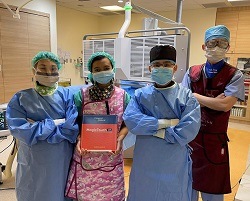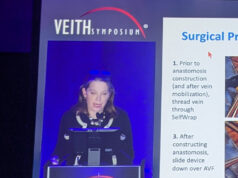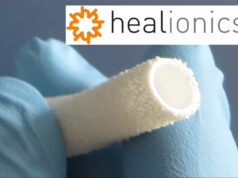 Concept Medical has provided an update on the progress of the IMPRESSION (sirolimus-coated balloon angioplasty versus plain balloon angioplasty in the treatment of dialysis access dysfunction) trial—a prospective, multicentre, two-arm parallel group, randomised clinical study designed to assess the efficacy of its MagicTouch AVF sirolimus-coated balloon in treating dysfunctional fistulas.
Concept Medical has provided an update on the progress of the IMPRESSION (sirolimus-coated balloon angioplasty versus plain balloon angioplasty in the treatment of dialysis access dysfunction) trial—a prospective, multicentre, two-arm parallel group, randomised clinical study designed to assess the efficacy of its MagicTouch AVF sirolimus-coated balloon in treating dysfunctional fistulas.
The IMPRESSION trial will compare the efficacy of the sirolimus-coated balloon versus a placebo plain balloon—the control arm—in the treatment of dysfunctional, or stenosed, arteriovenous fistulas (AVFs) used for vascular access in haemodialysis. A total of 170 patients with end-stage renal disease (ESRD) are being randomised in a 1:1 fashion between the two groups—and only ESRD patients with a matured dysfunctional AVF that has been in use for at least one month prior to angioplasty will be enrolled.
The study’s primary objective is to determine if the use of the MagicTouch AVF will result in an improvement in primary circuit patency at six months when compared with plain balloon angioplasty. The index patient was enrolled on 11 January 2021 and—at time of writing—37 patients have been enrolled in the IMPRESSION trial.
The trial is being conducted at three sites in Singapore, led by Chieh Suai Tan (Department of Renal Medicine, Singapore General Hospital [SGH], Singapore). Other site principal investigators include Edward Choke (Department of Surgery, Sengkang General Hospital, Singapore) and Jackie Ho (Department of Cardiac, Thoracic and Vascular Surgery, National University Heart Centre, Singapore).
According to a Concept Medical press release, SGH was chosen to lead this randomised controlled trial because of its prior experience using sirolimus-coated balloons in two investigator-initiated pilot studies. The studies had shown that patency rates associated with the use of the MagicTouch AVF in thrombosed arteriovenous grafts (AVGs) and dysfunctional AVFs were 65% and 82.9% at six months, respectively.
The MagicTouch AVF has already been granted Breakthrough Device Designation by the US Food and Drug Administration (FDA)—receiving this designation in August 2019.












